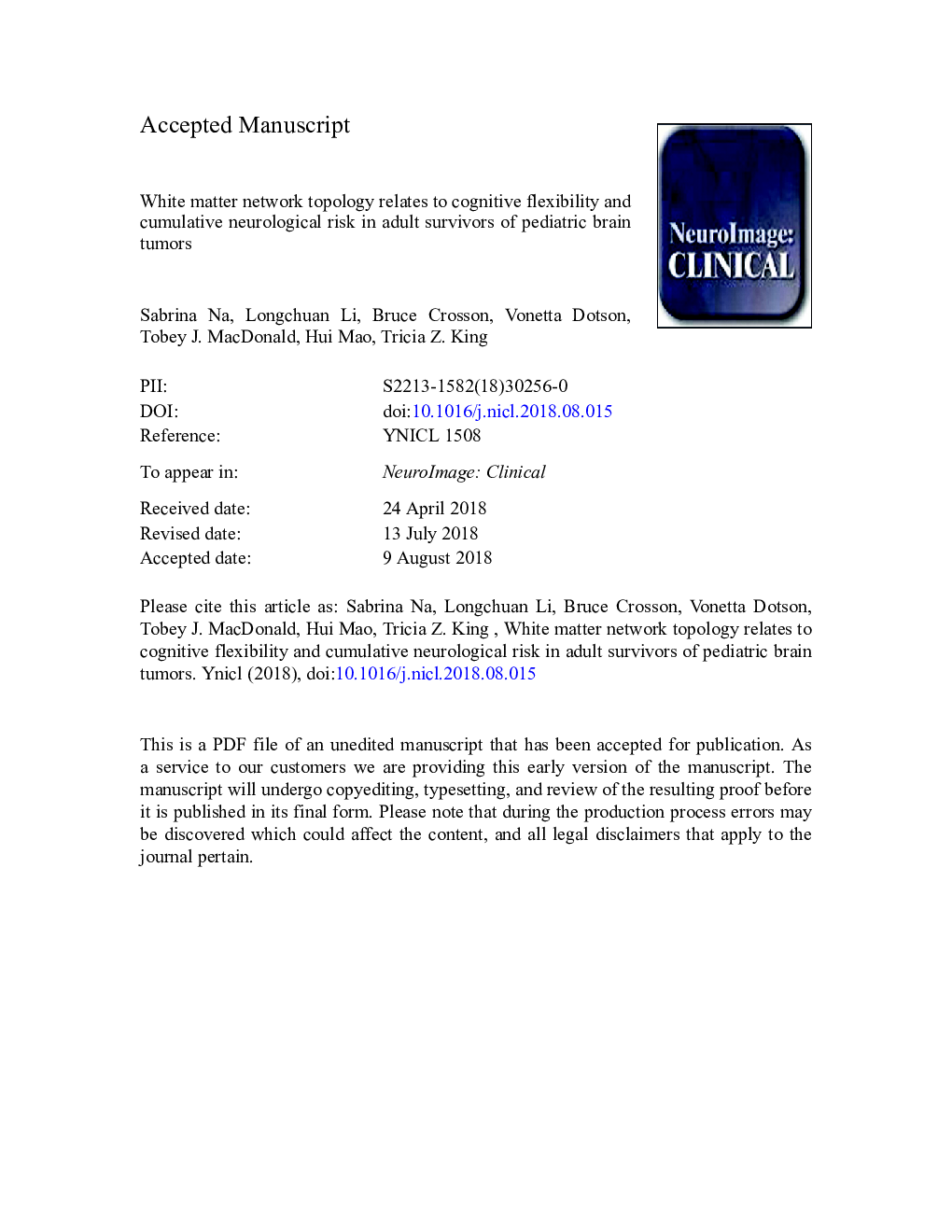| Article ID | Journal | Published Year | Pages | File Type |
|---|---|---|---|---|
| 9990930 | NeuroImage: Clinical | 2018 | 50 Pages |
Abstract
Adult survivors of pediatric brain tumors exhibit deficits in executive functioning. Given that brain tumors and medical treatments for brain tumors result in disruptions to white matter, a network analysis was used to explore the topological properties of white matter networks. This study used diffusion tensor imaging and deterministic tractography in 38 adult survivors of pediatric brain tumors (mean age in yearsâ¯=â¯23.11 (SDâ¯=â¯4.96), 54% female, mean years post diagnosisâ¯=â¯14.09 (SDâ¯=â¯6.19)) and 38 healthy peers matched by age, gender, handedness, and socioeconomic status. Nodes were defined using the Automated Anatomical Labeling (AAL) parcellation scheme, and edges were defined as the mean fractional anisotropy of streamlines that connected each node pair. Global efficiency and average clustering coefficient were reduced in survivors compared to healthy peers with preferential impact to hub regions. Global efficiency mediated differences in cognitive flexibility between survivors and healthy peers, as well as the relationship between cumulative neurological risk and cognitive flexibility. These results suggest that adult survivors of pediatric brain tumors, on average one and a half decades post brain tumor diagnosis and treatment, exhibit altered white matter topology in the form of suboptimal integration and segregation of large scale networks, and that disrupted topology may underlie executive functioning impairments. Network based studies provided important topographic insights on network organization in long-term survivors of pediatric brain tumor.
Related Topics
Life Sciences
Neuroscience
Biological Psychiatry
Authors
Sabrina Na, Longchuan Li, Bruce Crosson, Vonetta Dotson, Tobey J. MacDonald, Hui Mao, Tricia Z. King,
